Author: Will Webster
Subject Matter Experts: Dr. Vanessa Kowollik
What is employee engagement?
Employee engagement is the name given to the processes by which you keep staff members happy, confident and enthusiastic about their role within your business. Engaged employees feel motivated, have a sense of achievement from their work, and are advocates for the organization.
Keeping employees engaged is a constant process, rather than a one-and-done task – it’s about ensuring they have the optimum training, tools and environment to make coming to work every day feel rewarding and exciting.
For managers and people teams, employee engagement is all about answering a few key questions:
- How can we support employees’ professional development?
- How can we acknowledge and appreciate employees for their contributions?
- Is the company culture inclusive and positive?
- Are we mindful of employees’ workloads and stress levels?
- Is there room for creativity and innovation within the team?
Likewise, typical drivers of engagement are:
- Whether employees believe their role makes good use of their skills and abilities
- That they believe their role contributes to their team and the organization’s goals
- Whether employees connect with and believe in the organization’s values
In practice, putting a focus on employee engagement means delivering programs and processes designed to support employees – and to help them connect with their role, their team, and the organization.
Free eBook: How to design a world-class EX program
What is employee retention?
Employee retention is what naturally follows when you get employee engagement right. Retaining employees means lower turnover, which saves time and money on hiring and training, and helps glue teams together as they grow over time.
Employee retention fosters consistency within the business and sets a positive standard for new members of staff that will make them feel it’s worth their while to stick around.
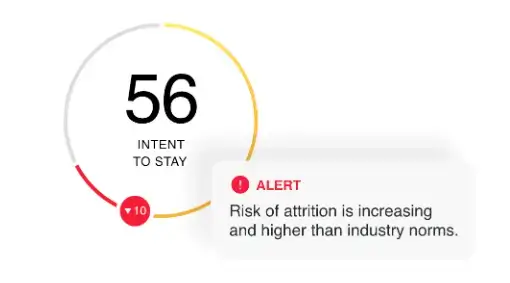
Retaining employees isn’t without its challenges. It’s important to develop and reward employees throughout their time with you – especially at the two-year mark, as this is when people tend to look elsewhere. That means any effective employee engagement program needs to factor in growth and professional development.
Is there a roadmap for people’s future within the business? If not, you’ll struggle to keep staff over the long term. Healthy retention should be the ultimate goal for any successful employee engagement program since keeping employee turnover at a healthy level helps to reduce unwanted hiring spend.
How does employee engagement help retention?
Engaged employees are happy employees, and happy employees tend to stay longer. Because of that simple connection, you can think of employee engagement as the method, and employee retention as the core outcome.
In that sense, employee engagement and retention are two sides of the same coin – and having an effective strategy to encourage both will help your business save time, resources, and money.
Engagement is linked so closely to retention because employee engagement…
- Increases job satisfaction
- Enhances loyalty
- Helps build a positive workplace culture
- Improves productivity
- Boosts employee morale
- Boosts internal advocacy
In other words? Engaged employees are more likely to have a long-term commitment to your organization, and will feel less likely to seek alternative employment. And, importantly, if employees who intend to stay for the long term are highly engaged, then they’re more likely to be higher performers.
Why is employee retention important?
Keeping employees for longer means stronger teams with more robust experience. Keeping them engaged means they’ll be happy to do their best work, rather than being tired, burned out, or apathetic to the cause. But what does that all mean in practice?
In the US, some $11 billion is lost every year to employee turnover – with around $2.9 million spent every single day looking for replacement hires.
But, even aside from all that wasted resource, there are wide-reaching knock-on effects from not focussing on employee retention. Engaged employees can increase productivity by 14%, and boost customer ratings by around 10%, for example.
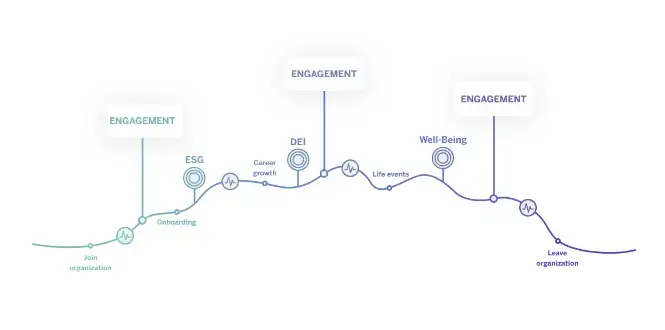
Bain & Company reports that companies with engaged employees can expect to earn 2.5 times as much revenue as those without, while Gallup, similarly, suggests there’s a 202% performance boost to be had if employees feel happy and motivated.
Complicating matters is the fact that the majority of companies think keeping existing team members is harder than hiring new ones. It doesn’t need to be, though; you just need the right processes in place to make employee engagement and retention a core part of your company culture.
How can I improve employee engagement?
Employee engagement and retention is all about doing everything you can to deliver a positive and rewarding workplace experience. Doing that means ticking a lot of boxes across a wide range of internal disciplines and areas:
Competitive pay and benefits
It’s one of the most obvious steps, but ensuring that your employees are paid competitively within the industry will go a long way to making people feel valued. If you can offer attractive benefits packages – including health insurance, retirement plans, and other perks – then people will be more inclined to stay for the long term.
It’s important to strike a balance here. More and more pay won’t necessarily lead to more engaged employees, but people who feel unfairly rewarded are less likely to feel engaged when other parts of the experience become challenging.
How?
- Conduct regular salary benchmarking to ensure your compensation is competitive.
- Implement performance-based bonuses or incentives to reward high achievers.
- Consider additional perks such as flexible spending accounts, wellness programs, or employee assistance programs.
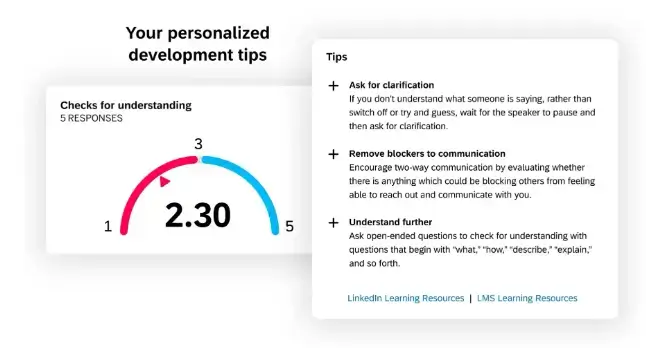
Professional development
Do you currently provide opportunities for training and skill development? Do people know their next step and how to get there? If you can bake training programs and clear guidance on how employees can progress within the organization, you’ll have teams full of people with something to aim for.
How?
- Establish a formalized training program that addresses current skill gaps.
- Offer mentorship programs to provide guidance and support for career development.
- Ensure that managers have regular, meaningful career development discussions with employees.
- Create a career development plan for each employee, outlining potential growth opportunities within the organization.
Recognition and rewards
Recognize and reward employees for their achievements and contributions, either publicly or privately, depending on their preferences. It’s a good idea to implement an ongoing employee recognition program that can help shine a light on outstanding performance.
How?
- Implement a structured employee recognition program with both formal and informal elements.
- Provide personalized recognition tailored to individual preferences.
- Integrate peer-to-peer recognition to encourage a positive team culture.
- Consider tangible rewards such as gift cards, additional time off, or professional development opportunities.
Healthy work-life balance
It’s really important to actively encourage a healthy work-life balance to help prevent burnout. Policies that discourage excessive overtime and support time off can help here, alongside allowing for flexible work schedules and remote working.
How?
- Enforce policies that discourage excessive overtime and promote regular breaks.
- Implement flexible work schedules or compressed workweeks.
- Encourage employees to use their vacation days and consider offering additional time off benefits.
- Foster a culture that values and respects personal time outside of work.
Open communication and involvement
Fostering open communication between employees and management means regular feedback and a culture where employees feel comfortable expressing their concerns or ideas for improvement. If you can proactively seek and value people’s input on projects, policies, and company initiatives, they’ll feel much more involved in the business’s overall success.
How?
- Schedule regular one-on-one meetings to discuss performance, goals, and concerns.
- Create feedback channels such as suggestion boxes or anonymous surveys.
- Hold regular team meetings to discuss ongoing projects and address questions.
- Build out a process by which employees can approach management with ideas or concerns.
Positive working environment
If people are working at an office, it pays to create a positive and inclusive workplace with comfortable comfortable places to work, take breaks, and socialize. Wellness programs and gym memberships can help promote a healthy, more balanced working life.
How?
- Invest in comfortable office spaces with ergonomic furniture and good lighting.
- Establish a culture of inclusivity through diversity and inclusion initiatives.
- Organize team-building activities and social events to strengthen relationships.
- Provide wellness programs, such as fitness classes or mental health resources.
- Ask employees what they need from their work environment in order to be productive.
Performance management
Establish clear performance expectations and regularly assess people against them. If performance meets the right criteria, it’s natural for people to expect pay increases or promotions. On the other hand, regular, constructive feedback can help employees feel supported.
How?
- Set clear performance expectations and goals during regular performance reviews.
- Offer constructive feedback promptly, focusing on both strengths and areas for improvement.
- Provide opportunities for skill development based on performance assessments.
- Regularly revisit and adjust performance expectations to align with organizational goals.
Exit interviews
It’s really important that when you do inevitably say goodbye to some employees, they have the opportunity to tell you why. Conduct exit interviews to help you and your team understand the reasons behind departures, and use what you learn to make improvements in the workplace.
How?
- Conduct structured exit interviews to gather detailed feedback from departing employees.
- Use standardized questions to cover various aspects of the employee experience.
- Analyze exit interview data regularly to identify recurring patterns or issues.
- Implement changes or improvements based on the feedback received to address employee concerns.
- Exit surveys – like those provided by Qualtrics – can solicit written insight that people might not want to disclose on a call or in a meeting.
Learn more about improving employee engagement
Three top employee engagement strategies for retention
Ok, so how do you put all that into practice? While the above covers most of the bases, you might find it difficult to tick every box without the right employee retention strategies in place.
That’s why we’ve boiled everything down to three key steps that can help teams of any size foster more supportive, empowering working environments that result in keeping your best people for longer.
1. Make engagement a science
It’s worth understanding that engagement is an ongoing process – and one that needs to be handled delicately. That means delivering experiences and rewards that land with impact, rather than bombarding people who just want to do their best work.
The answer here is to use employee engagement software that can track, predict and prompt managers with smart recommendations based on intelligent insights. That starts with capturing employee feedback at the right moment, and in a way that turns opinions into positive change.
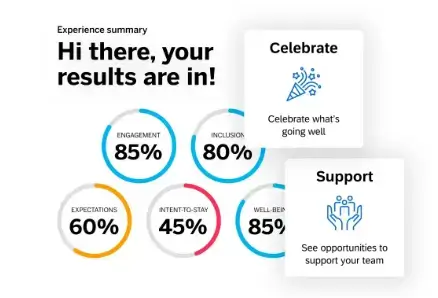
Qualtrics People Engage, for instance, helps remove the guesswork from the process of employee engagement by implementing powerful analytical models and cost-benefit analysis tools to identify what your employees value and where to focus to deliver the most impact.
Measuring the employee experience against existing benchmarks can help you spot trends, course correct where necessary, and – ultimately – turn the art of engagement into a true science.
2. Manage the employee lifecycle
Retention is the goal, but for most people, a job has a specific lifecycle that starts during the application process and ends with an exit interview. There are dozens of important touchpoints between those two – from onboarding to role changes and promotions – and handling those deftly can be the difference between a short-termer and someone who stays and flourishes over the long haul.
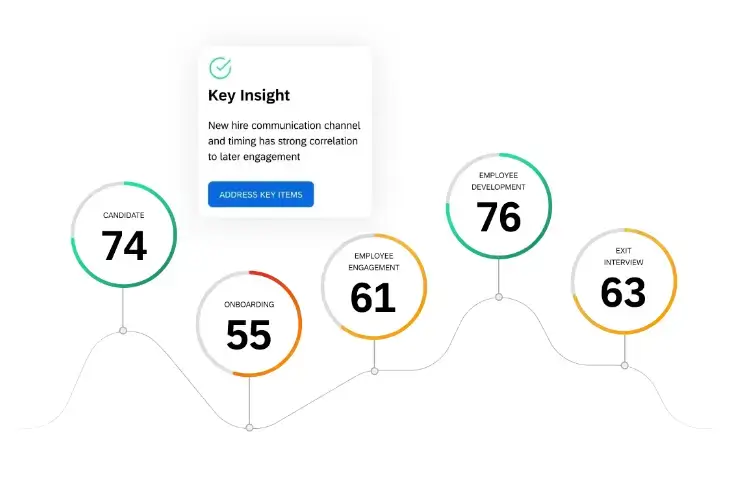
Again, the right technology can help here by removing the guesswork behind those touchpoints and all-important moments. If your employee retention software can fully map the employee lifecycle, you’ll know the moments your business needs to focus on. Are there experience gaps in your onboarding process that leave a bad impression, for example? Or is your personal development process lacking a truly personalized touch?
In short? The right software should be able to link all these moments into a manageable map that evolves right alongside your employees.
3. Use AI to fill in the gaps
Your employees will doubtless have a lot of opinions on what could work better, and where employee experience gaps lie, but they might not always be able to relay them in a survey. AI can help here, with tools designed to understand emotion, intensity, and sentiment from internal comms.
By combining that data with what you gather in your employee pulse checks and other forms of feedback, you can start to build powerful predictive models that help you make data-driven decisions. That means making proactive changes to the employee experience before any would-be issues become a widespread source of employee churn.
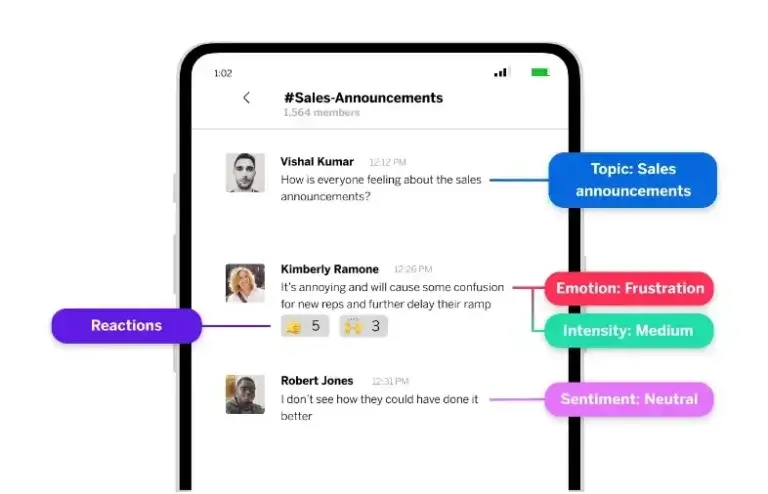
If you can understand what’s driving churn and what’s driving retention, you can focus on improving things without having to guess – and you’ll keep employees engaged, happy, and wanting to stay for longer.
Qualtrics XM for People Teams offers all that and much more. Qualtrics is a powerful, AI-driven software platform built to drive more engaged and higher-performing teams, improve manager and individual effectiveness, and make informed and timely business decisions.
Get started with our free employee engagement survey template